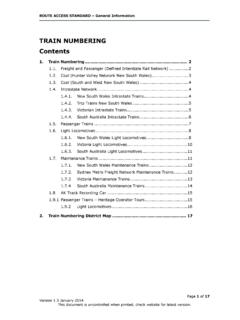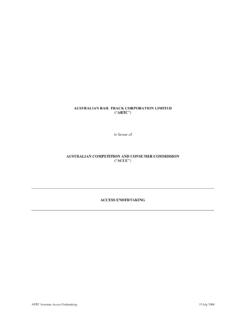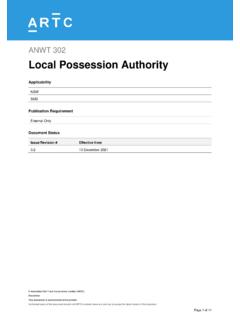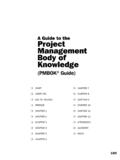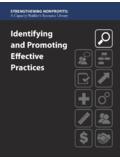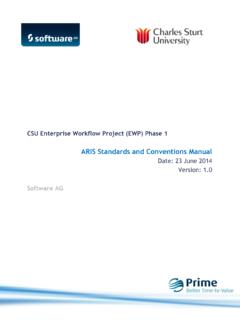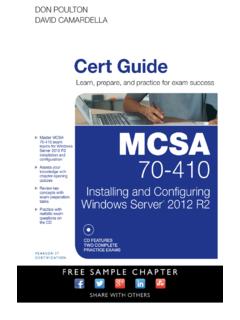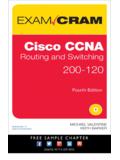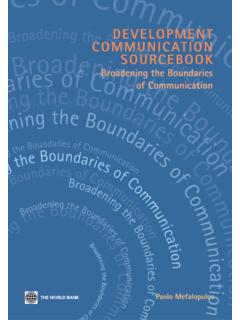Transcription of Melbourne–Brisbane Inland Rail Alignment Study Working ...
1 ARTC. melbourne brisbane Inland rail Alignment Study Working Paper No. 6. Design Standards y . d d ce Stu . u t s od n ic e pr m e d n d as the ign de pe r w f Al se ap p e e o il er ts a p i pa urs d R su nd i ng co lan en y a r k he n be d o t I u w in ne has st is a t h e h b T r is ten of t e -B on rt r n s c po o u It re l b a l M. e fin e th by y . d d ce Stu . u t s od n ic e pr m e d n d as the ign de pe r w f Al se ap p e e o il er ts a p i pa urs d R su nd i ng co lan en y a r k he n be d o t I u w in ne has st is a t h e h b T r is ten of t e -B on rt r n s c po o u It re l b a l M. e fin e th by ARTC. Contents Page Number 1. Introduction ..1. Overview 1. Background to melbourne brisbane Inland rail 1. Study objectives, stages and Working papers: 1. Roles of the Lead Technical Consultant (LTC) and the Financial and Economic Consultant (FEC) 3. Stage 1 analysis 3.
2 Working Paper objectives 5. 2. Methodology .. 6. Background 6.. Existing standards 7. Project scope of works y 7. ed ud Context 8. c S t . u s 3. Operations .. 9. Summary r od e nt i ce 9. p m d end Reference train 9. Maximum load s a th ig d e n e 9. Gradient w l e p p 10. f Standards 10. r o A r s a pe onstrainse ail pe its Existing ruling gradients 10. Effect of gradients 11. Optimisinga Maximum speed p gradients u r R su d 13. Double stack g o d n 13. Axle loadsin trains c lan en y a 13. k r Locomotive axle e n loads e d 13. o Wagon th axle I s b tu 14. w n e loads a s i .. n h e 14. i s 4. Permanent way a t h 16. h b s en f t Methodology r icriteriat o 16. -Band o n rt Specific 17. e 5. Signalling n c o communications .. 21. tsOrderrTrain p eWorking u I. Advanced Management System (ATMS) 21. l design requirements Train (TOW) 21. l e fAsset a Interface n 21. M i monitoring Power requirements 22.
3 E Current design standards 22. h Telecommunications 22. 22. y b6. Civil ..23. Introduction 23. Earthworks 23. Cuttings 23. Embankments 23. Treatments 24. Water Crossings 24. Methodology 24. Hydrology 25. Bridges, viaducts and culverts 26. Typical details 26. Specific criteria 26. Roads 27. Methodology 27. Specific criteria 27. Crossing classification 29. melbourne brisbane Inland rail Alignment Study Working Paper No. 6: Design Standards Page i ARTC. 7. Tunnels .. 31. General 31. Design process 32. Specific criteria 32. Space proofing/tunnel cross-sections 32. Design loads and design cases 33. Design life 33. Watertightness and durability 33. Tunnel linings 33. Fire and life safety 33. Fire life safety process and proposed approach 33. Tunnel ventilation 34. Specific criteria 34. Tunnel construction and equipment 35. 8. Environmental standards and 36. Overview 36. Acoustic guidelines y.
4 36. d New South Wales guidelines 36. d ce tu Queensland guidelines 37. Sleep disturbance u S s . 38. Ground-borne noise od n t c e 38. pr i Vibration criterion 39. Vibration criterion e d 40. m d n List of tables as the ign de pe r w f Al se ap Table 1-1 Working papers p e e o il er ts 2. s gradientsa p i pa r R u Table 3-1 Ruling gradients in NSW 11. Table 3-2 Balancing speed uvariousdtreatments options on various for n d reference train 12. Table 4-1. n g Existing situations o c lan en y a and for track 16. Table 4-2 i kdetailshe n be d Track standards 17. r t eI s o performance tu Table 4-3 Track 17. Table 4-4. w n Designi life n Track a s 17. i Table 4-5. s Water a types t h he 20. h b is for f t intersecting with an existing road nalignment Table 6-1 crossing 25. T 6-2 Treatments Table r t ean o 27. Table 6-3. -B overbridges Road Table 6-4 eRoad on ocriteriart 27.
5 C crossing Table 7-1n Bureau of Meteorology p limits data 29. r Tunnelts air e 34. Tableu7-2 I. o 7-3 Summary l r of tunnel construction and equipment quality 34. l b Table a 35. e Table Table 8-1. f i n rail Airborne traffic noise trigger levels for residential land uses 37. M e 8-2 Airborne rail traffic noise trigger levels for sensitive land uses 37. th8-4 Acceptable intermittent vibration levels for rail pass by events (DECC). Table 8-3 Ground-borne internal noise trigger levels (all developments) 39. y Table 39. bTable 8-5 Ground-borne internal noise trigger levels (all developments) 40. List of figures Figure 1-1 melbourne brisbane Inland rail corridor (Stage 2) 4. Figure 3-1 Train speed when climbing 12. Figure 4-1 Rollingstock outline F structure outline 19. Figure 4-2 Main line track 20. Figure 6-1 Formation construction in black soil 24. Figure 7-1 Typical section for road header tunnel 31.
6 Figure 7-2 Typical section for TBM tunnel 32. List of appendices Appendix A Standards melbourne brisbane Inland rail Alignment Study Working Paper No. 6: Design Standards Page ii ARTC. glossary ABS Australian Bureau of Statistics AC traction Alternating Current traction motors; used in newer diesel-electric locomotives ACCC Australian Competition and Consumer Commission Alignment The exact positioning of track; may be compared with 'route', which gives only a very general indication of the location of a railway ARA Australasian Railway Association area route For the purposes of the Study , a route over an entire area, areas A, B, C or D. ARTC Australian rail Track Corporation articulated wagons Wagons comprising two or more units, with adjacent ends of individual units being supported on a common bogie and permanently coupled AS 4292 Australian Standard for Railway Safety in six parts 1995-97.
7 ATC Australian Transport Council ATEC Australian Transport and Energy Corridor Ltd d d y ATMS. ce tu Advanced Train Management System; communication-based safeworking system S . currently being developed by ARTC. u t s od n c e ATSB Australian Transport Safety Bureau axle load pr e d i The load transmitted to the track by two wheels of one axle of a bogie m d n as the ign de pe backhaul Returning wagons to a point where they can be used for their next assignment;. freight moving in the opposite direction to the main flow BAH. r w f Al se ap Booz Allen Hamilton (now Booz & Co). bank engine p e e o il er ts locomotive used to assist a train on part of its journey, typically to climb a steep a p i pa urs d R su nd grade; such grades are termed 'banks' in railway parlance BAU Business As Usual g co n n i n a ee y a BCR Benefit-Cost Ratio k e l BITRE. o r th In b ud Bureau of Infrastructure, Transport and Regional Economics (formerly BTRE and w in ne has st BTE).
8 Bogie two axles and a sub-frame under each end of a wagon BOOT is a t h e h b Build, Own, Operate, Transfer T of gauge ris ten of t break Where a line of one track gauge meets a line of a different track gauge. broad gauge B. - on rt Railway track gauge of 1600 mm; used in Victoria except on interstate main lines e n s c po and some other lines BTE. r u It re Bureau of Transport Economics; now the BITRE. o BTRE. bcant l Bureau of Transport and Regional Economics; now the BITRE. l a Difference in the height of two rails comprising the railway track; cant may also be M. e fin described as superelevation. It allows a train to travel through a curve at a speed capexhe higher than otherwise. Camber on the curve of a road has a similar function. t capital expenditure bCCMy CBA Cost-Benefit Analysis Capital cost model coastal route The existing rail route from melbourne to brisbane via Sydney corridor A strip of land with a width measured in kilometres that is suitable for a railway.
9 Study of a corridor leads to the identification of route options. CountryLink CountryLink is part of the rail Corporation of New South Wales (RailCorp). It operates passenger trains from Sydney to melbourne , Sydney to brisbane and to NSW regional centres. CPI Consumer Price Index CSO Community Service Obligation DBFM Design, Build, Finance, Maintain DC Direct Current; form of electric traction DIRN Defined Interstate rail Network distributed The practice of providing additional locomotive power within or at the rear of a locomotives train as well as in front. melbourne brisbane Inland rail Alignment Study Working Paper No. 6: Design Standards Page iii ARTC. DITRDLG Australian Government Department of Infrastructure, Transport, Regional Development and Local Government DMU Diesel multiple-unit passenger train DORC Depreciated Optimised Replacement Cost double stacking Placement of one intermodal freight container on top of another in a specially designed well-wagon EBITDA Earnings before Interest, Tax, Depreciation and Amortisation EEC Endangered Ecological Community EIA United States Energy Information Administration EIRR Economic Internal Rate of Return energy efficiency Ratio of the transport task to the energy input; a measure of energy efficiency is tonne/km per MegaJoule (MJ).
10 Energy intensity Ratio of energy input to transport task; the inverse of energy efficiency; a measure of energy intensity is MJ/net tonne/km FEC Financial and Economic Consultant for the melbourne - brisbane Inland rail . Alignment Study , PricewaterhouseCoopers with ACIL Tasman and SAHA. y five-pack wagon d d Five wagons operated as one, either through being permanently coupled or the use of articulation ce S tu . fuel consumption u t s Measured in litres per gross tonne kilometre (litres/gtk) or sometimes litres per od n c e 1,000 gross tonne kilometre (litres/1,000 gtk); sometimes net tonnes are used i pr e instead of gross tonnes m d n d as the ign de pe GATR Great Australian Trunk rail System w f Al se ap GDP Gross Domestic Product GIS. r e e o il er ts Geographic Information System gross p a p i Total mass of a wagon and its payload GST. pa urs d R su nd Goods and Services Tax ng co lan en y a gtk Gross tonne kilometres; a standard measure of track usage; the gross weight of a i k he n be d train multiplied by kilometres travelled.

